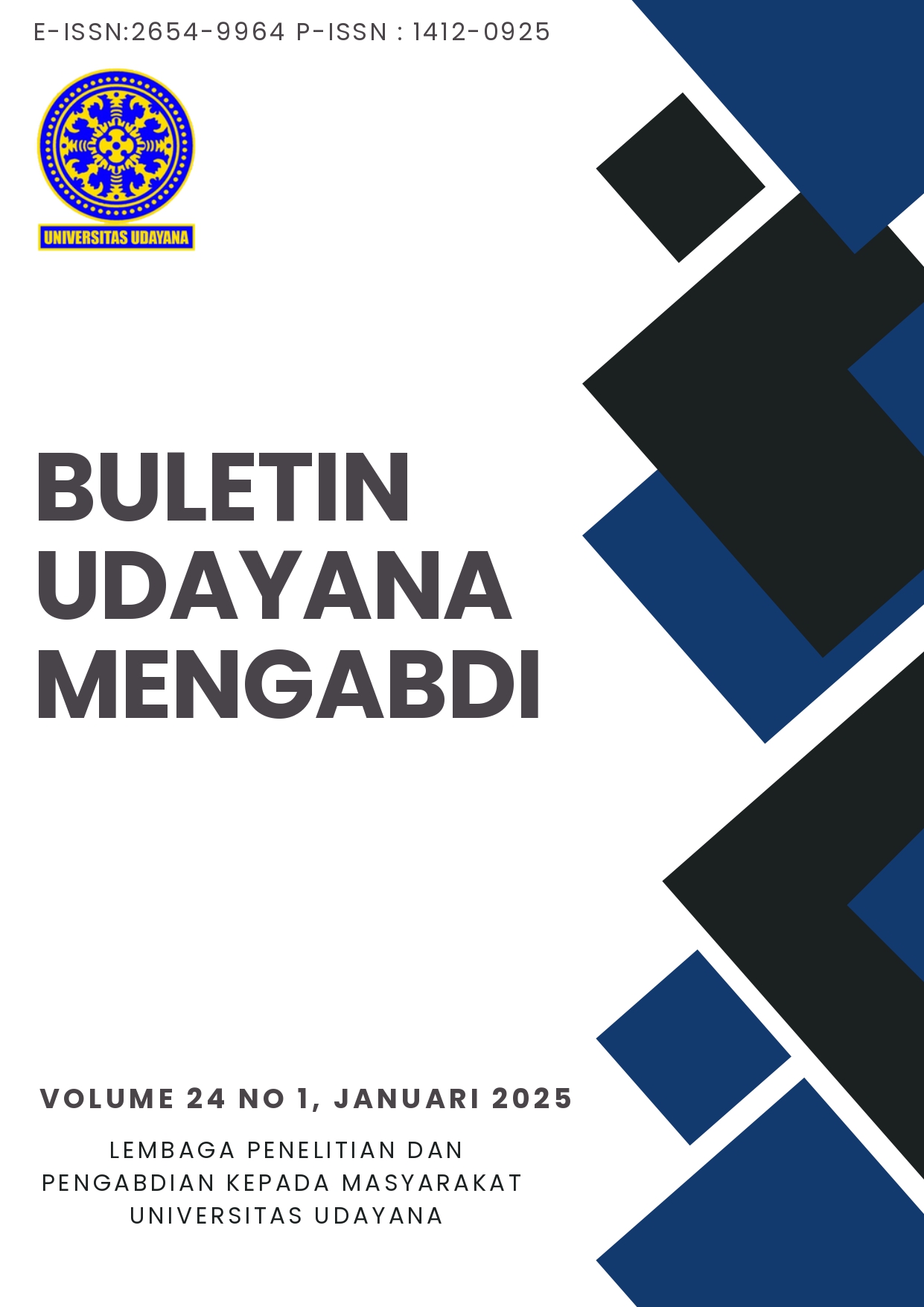PENYULUHAN DAN PELATIHAN PEMBUATAN GULA-GULA JELLY KELOR (GUJEKELOR) PENCEGAH GIZI BURUK (STUNTING)
Abstrak
Penurunan gizi buruk (stunting) merupakan program pemerintah yang bisa dilakukan dengan cara pencegahannya pada balita dan ibu hamil. Stunting dapat menyebabkan pertumbuhan tinggi badan terganggu. Hal ini dapat terjadi pada saat anak dalam kandungan dan di bawah lima tahun. Daun kelor dapat digunakan untuk pencegahan stunting karena kandungan vitamin dan mineral yang baik untuk pertumbuhan anak. Daun kelor banyak terdapat di Desa Pucak tetapi hanya dikonsumsi sebagai sayur. Inovasi daun kelor dengan cara dibuat menjadi gula-gula yang mudah dikonsumsi dengan rasa yang enak dan warna yang menarik bagi anak-anak. Pengabdian ini bertujuan untuk meningkatkan pengetahuan dan keterampilan masyarakat Desa Pucak untuk mengolah kelor menjadi gula-gula jelly kelor (Gujekelor) yang kaya nutrisi dan serat serta cara pengemasannya secara menarik dan higienis. Pengabdian dilakukan dengan metode penyuluhan mengenai kandungan gizi, manfaat daun kelor, dan pelatihan pembuatan gujekelor yang diikuti oleh ibu-ibu masyarakat Desa Pucak Maros, serta pengisian kuesioner. Hasil kuesioner diperoleh data peningkatan 50% pengetahuan mengenai kandungan nutrisi dan manfaat daun kelor, 100% peningkatan keterampilan dalam pembuatan dan pengemasan gujekelor, Masyarakat diharapkan dapat memproduksi gujekelor dalam skala industri rumah tangga sehingga dapat mencegah adanya kejadian stunting di Desa Pucak.
Kata kunci : daun kelor, stunting, gula-gula, jelly
##plugins.generic.usageStats.downloads##
Referensi
Darna, A. R. P., M.L.M Timbuleng, E. M. L. M. T., Azzahroh, N., Khasanah, P. U., Arofah, G. E., & Kartikasari, M. N. D. (2019). PERI DALOR (Permen Jeli Daun Kelor) : Inovasi Permen Kaya Antioksidan Sebagai Solusi Kesehatan. SEMAR (Jurnal Ilmu Pengetahuan, Teknologi, Dan Seni Bagi Masyarakat), 8(1), 35–39. https://doi.org/10.20961/semar.v8i1.22062
Fahey, J, W, (2005), Moringa oleifera : A Review Of The Medical Evidence For Its Nutritional, Therapeutic and Prophylactic
Gopalakrishnan, L., Doriya, K., & Kumar, D. S. (2016). Moringa oleifera: A review on nutritive importance and its medicinal application. Food Science and Human Wellness, 5(2), 49–56. https://doi.org/10.1016/j.fshw.2016.04.001
Herwin, Nurung, A. H., & Kosman, R. (2023). Pendampingan dan Edukasi pada Keluarga dengan Anak Stunting tentang Pembuatan Suplemen Daun Kelor melalui Studi Antropometri Media Karya Kesehatan : Volume 6 No 1 Mei 2023 Pendahuluan Stunting merupakan salah satu masalah kesehatan yang menjadi prioritas. Media Karya Kesehatan, 6(1), 78–94.
Primadana, P. F. I., Masudah, L., & Usma, N. (2023). Penggunaan Daun Kelor (Moringa oleifera) Dalam Upaya Peningkatan Kesehatan Masyarakat di Indonsia. Bimfi, 10(1), 1–10. https://doi.org/10.48177/bimfi.v10i1.94
Purba, E. C. (2020). KELOR (Moringa oleifera Lam.): PEMANFAATAN DAN BIOAKTIVITAS. Pro-Life, 7(1), 1-12.
Rani, K.C., Jayani, N.I.E., Darmasetiawan, N.K. and Setiawan, F., 2019. Modul Pelatihan Kajian Efektivitas Dan Keamanan Kelor.
Saputra, A., Arfi, F., & Yulian, M. (2020). Literature Review: Analisis Fitokimia dan Manfaat Ekstrak Daun Kelor (Moringa oleifera). Amina, 2(3), 114–119.
Simbolon, J.M., Sitorus, M., & Nelly, K. (2008). Cegah Malnutrisi dengan Kelor.Yogyakarta: Kanisius.

This work is licensed under a Creative Commons Attribution-ShareAlike 4.0 International License.



